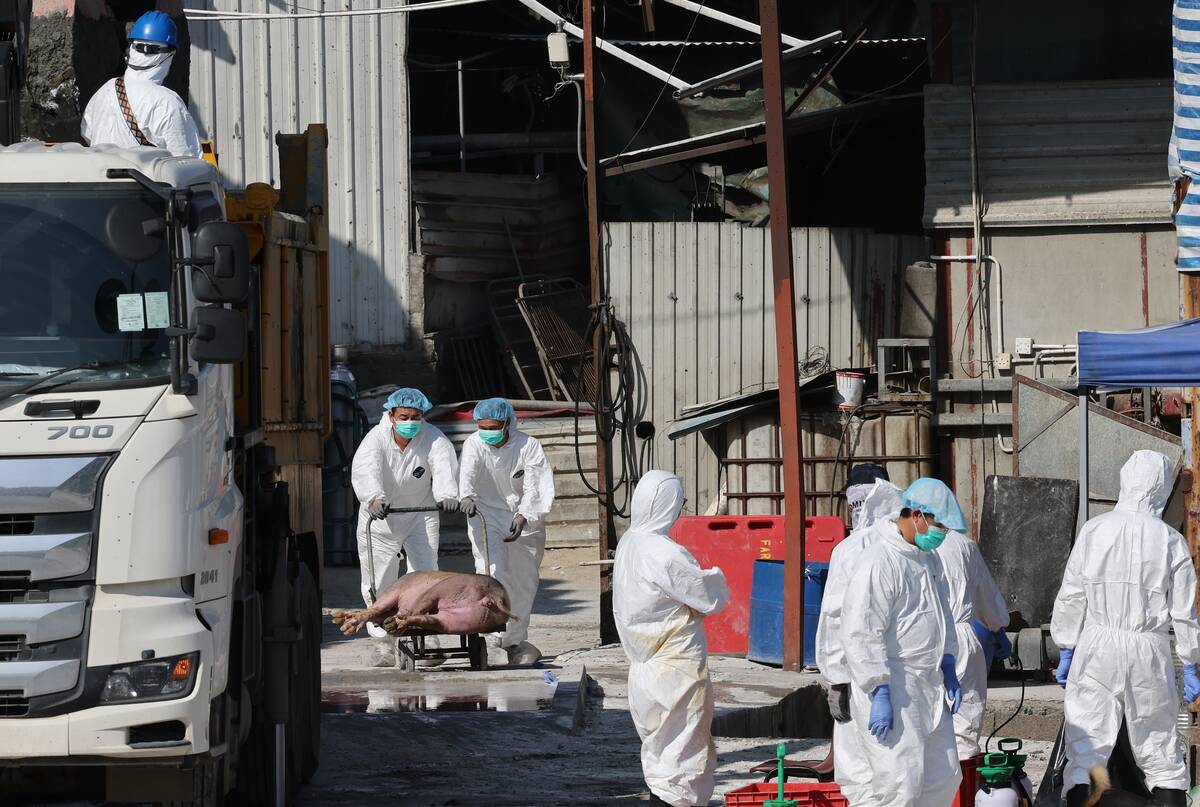Bison prices are in full rebound mode, with hook prices at $2.25 a pound and a shortage of supply pushing the meat even higher, according to speakers at the Great Spirit Show and Sale held in Brandon.
Dave Carter, executive director of the U.S.-based National Bison Association, said market demand for bison is strong south of the border.
“When I came on board with the bison association in the beginning of 2002, my first job was to write a report to the (U.S. Department of Agriculture),” said Carter.
Read Also

Mixed results on new African swine fever vaccine
The new African swine fever vaccine still has issues, but also gave researchers insight into how virus strain impacts protection against the deadly pig disease.
“The first sentence was: ‘The North American bison industry is in a state of economic meltdown.’ But the change that has come about is really quite dramatic.”
Between 2000 and 2007, the number of bison processed in the U.S. has increased 282 percent, he said, adding that almost all of the meat is going straight to consumers who can’t get enough of it.
“In 1999 and 2000, only tenderloins and strips were being sold and everything else was going into the freezer. Now we’re selling rounds and trim, and bison fajitas, meatloaf and pot roasts are showing up on menus.”
The bison industry is taking advantage of several consumer trends in the U.S. food marketplace.
The meat appeals to “eco-advocates” who want local, sustainable, non-factory farmed food, and “healthy holistics,” whose eating decisions are driven by perceived health benefits.
“These are the people who have recognized that what we eat affects not only how long we live, but how well,” he said.
“We sit right there with people who say, ‘I love red meat, but I want to eat the right kind of red meat, because my doctor tells me I’m not going to live if I don’t.’ “
The biggest boost for the bison industry has come from the celebrity chefs, food writers and cooking shows that have soared in popularity.
Another major driver is animal welfare, especially after the massive meat recall and scandal in the wake of the California meat plant downer cow video that circulated on the internet.
“The public perception of the bison industry is very good. We have developed a real halo with the public out there,” he said. “They understand that we’re raising the bison the way nature intended, without all the growth hormones and the chemicals.”
Mandatory country-of-origin labelling (COOL), introduced under the 2002 U.S. farm bill and expected to be enforced in September, won’t affect Canadian bison exports.
“Bison is not mentioned as a species, so technically we are not covered by COOL,” said Carter.
Mark Silzer, president of the Canadian Bison Association, said that in 2007, slaughter numbers increased by 17 percent while the 225,000-head Canadian herd grew only seven percent.
The on-the-rail price has recovered from the low of $1.10 a lb. in 2003 during BSE to today’s $2.25 a lb., he added. Such prices give producers further incentive to cash in while meat prices are high.
“Our production cycle is five years if you start with heifer calves. So, we’ve got to be looking down the road,” he said.
Demand is so strong for bison meat, said Dean Andres of Carmen Creek Gourmet Meats, that his company has lately had the luxury of “firing” less-desirable customers.
“There’s no question that there’s a shortage of finished animals. From our perspective, it looks like that shortage could be there for five, six, seven or 10 years,” said Andres. “Supply is going to get worse before it gets better.”
Rocco Verelli of Quebec-based Northfork Canadian Bison Ranch said his operation’s bison meat sales are up 20 percent over last year.
With supplies of product tight, new customers are being offered a hanging carcass weight price of $2.50 per lb.
“This industry is doing well. I’m just scared about availability. It’s tough out there because everyone is asking for buffalo and you don’t want to disappoint them,” said Verelli.
Leonard Chopp, president of the Manitoba Bison Association, said that luring more cattle ranchers into the bison industry might be one solution to shrinking herd numbers.
At the bison group’s promotional booth at the Royal Manitoba Winter Fair last week, he spoke to many cattle producers who expressed interest in diversifying into bison.
“They say, ‘we raise beef, but we like bison meat,’ ” said Chopp. “In the future, they may be switching over.”














